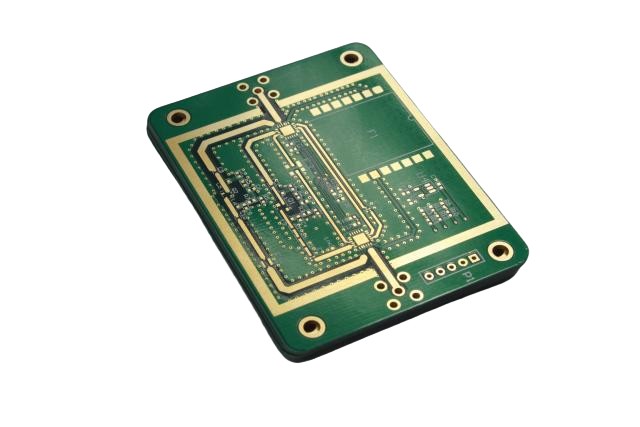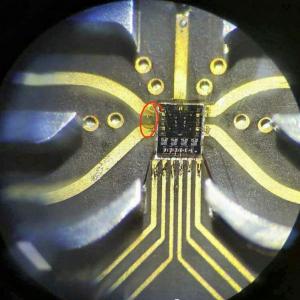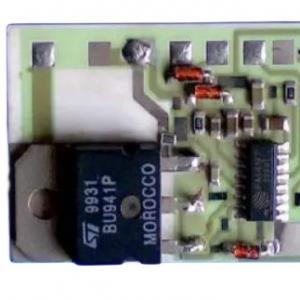How much does multi-layer PCB manufacturing cost?
How much does multi-layer PCB manufacturing cost?
The manufacturing cost of a multi-layer PCB can be affected by a variety of factors, including the number of layers, board size, material quality, manufacturing process complexity, order quantity, factory location, etc.
Generally speaking, a simple four-layer PCB may cost between $10 and $30 per square inch. A six-layer PCB may cost between $20 and $50 per square inch. If there are more layers, more complex processes, or special material requirements, the cost may be higher.
For small-volume production, the unit cost may increase significantly because the cost of setup and preparation work is spread over fewer products. With large-scale production, the unit cost is usually reduced.
It should be noted that the above is only a rough estimate range, and the actual cost may fluctuate greatly. If you need an accurate quote, it is recommended to provide detailed design and production requirements to the multi-layer PCB manufacturer to obtain an accurate quote.

What factors affect the manufacturing cost of multi-layer PCBs?
Here are some of the main factors that affect the manufacturing cost of multi-layer PCBs:
1.Multi-layer PCB Number of layers: The more layers there are, the more complex the manufacturing process is, and the higher the cost is.
2. Board size of multi-layer PCB: A larger PCB area requires more material, which increases the cost.
3. Multi-layer PCB material selection: High-quality, high-performance substrate materials (such as special FR4 grades, high-frequency materials, etc.) are usually more expensive.
4. Multi-layer PCB Line density and complexity: Dense and complex wiring designs require more sophisticated manufacturing processes and higher precision, which increases costs.
5. Aperture and hole density of multi-layer PCB: Small apertures and high-density drilling increase processing difficulty and cost.
6. Multi-layer PCB Solder mask and silk screen requirements: Special solder mask colors, thicknesses, or high-precision silk screens increase costs.
7. Multi-layer PCB Surface treatment: Different surface treatment methods such as gold plating, immersion gold, and tin spraying have different costs, and gold plating is usually more expensive.
8. Testing requirements of multi-layer PCB: More stringent and complex electrical tests increase costs.
9. Multi-layer PCB order quantity: Large-volume orders can usually reduce unit costs because production setup costs can be spread over more boards.
10.Multi-layer PCB Delivery time: Urgent orders may require additional resources and expedited processing, resulting in higher costs.
11. Manufacturer's location and production capacity of multi-layer PCB : Labor costs and operating costs vary from region to region, and production capacity and efficiency also affect prices.
12. multi-layer PCB special functional requirements: Special design requirements such as blind vias, buried vias, impedance control, etc. will increase costs.

How to reduce the manufacturing cost of multi-layer PCB?
Here are some ways to reduce the manufacturing cost of multi-layer PCBs:
1. Multi-layer PCB Optimize design:
- Reduce the number of layers: Try to reduce the number of PCB layers while meeting functional requirements.
- Simplify wiring: Plan the lines reasonably, avoid overly complex routing, and reduce line density.
- Merge functions: If possible, integrate some functional modules to reduce the area of PCB.
2. Choose the right material of multi-layer PCB:
- Evaluate different grades of substrate materials and choose the cost-effective material, not necessarily the highest performance.
3. Multi-layer PCB Control board size:
- Compactly layout components to minimize the size of PCB.
4. Multi-layer PCB Standardized design:
- Use common standard apertures and hole spacing to facilitate manufacturing and reduce costs.
5. Multi-layer PCB reasonably plan the order quantity:
- Try to increase the order volume to obtain economies of scale.
6. Multi-layer PCB Choose the right manufacturer:
- Compare the quotations and capabilities of different manufacturers, and choose a manufacturer with high cost-effectiveness and reliable quality.
7. Multi-layer PCB Simplify test requirements:
- Only perform necessary test items and avoid excessive testing.
8. Multi-layer PCB Advance planning and communication:
- Communicate with the manufacturer fully during the design phase to understand the factors affecting costs so as to make optimized decisions.
9. Improve production efficiency:
- Use efficient production processes and equipment to reduce production cycles and scrap rates.
10.Multi-layer PCB Utilize stock materials:
- If possible, use the manufacturer's existing stock materials, which can sometimes provide certain price discounts.
How to further reduce the manufacturing cost of multi-layer PCBs while ensuring quality?
To further reduce the manufacturing cost of multi-layer PCBs while ensuring quality, the following aspects can be considered:
1. Accurate design simulation and verification: In the design stage, use advanced PCB design software for simulation and verification to ensure the accuracy and reliability of the design and reduce the cost of later modifications and rework.
2. Close cooperation with manufacturers: Communicate closely with the selected manufacturers at the beginning of the design to jointly explore the optimization design plan to adapt to their production process and capabilities and reduce manufacturing costs.
3. Optimize the stacking structure: Rationally design the stacking structure of the PCB, balance electrical performance and cost, and avoid unnecessary material waste.
4. Improve yield control: By strengthening quality monitoring and management in the production process, improve the yield of products and reduce the generation of waste and defective products.
5. Optimize procurement strategy: Establish long-term and stable cooperative relations with suppliers to strive for better material prices and delivery conditions.
6. Use automated design tools: Use automated wiring and layout tools to improve design efficiency and reduce human errors.
7. Standardized parts and components: Try to use standardized parts and components to facilitate procurement and reduce costs.
8. Reduce design changes: After the design is completed, try to avoid unnecessary design changes, as changes may result in additional costs and time costs.
9. Use common design: For serialized products, try to use common PCB design modules to reduce development costs.
10. Optimize the test process: Use more efficient and targeted test methods and equipment to reduce test costs.
Share some real cases of successful cost reduction in multi-layer PCB manufacturing
Here are some real cases that have successfully reduced the manufacturing cost of multi-layer PCBs:
- KEY TECHNOLOGY: The company's invention patent "A method for making a printed circuit board" optimizes and adjusts the process parameters of the PCB board preparation process and micro-etching thinning copper. The product reduces the use of copper, the manufacturing process is very precise, the inner layer production is smooth, and the scrap rate is reduced. Benefiting from the application of this invention patent technology, the company's product turnover increased by 47%, and the tax amount increased by 90%, creating more jobs for the company, and having a positive impact on stimulating innovation, updating technology, saving resources, and improving the environment.





